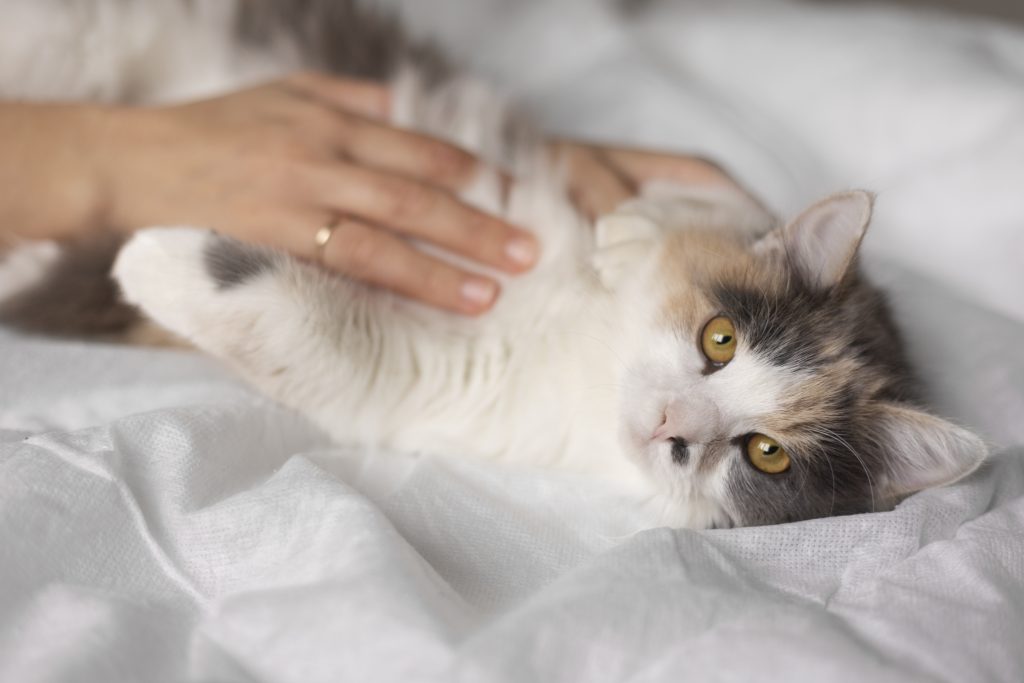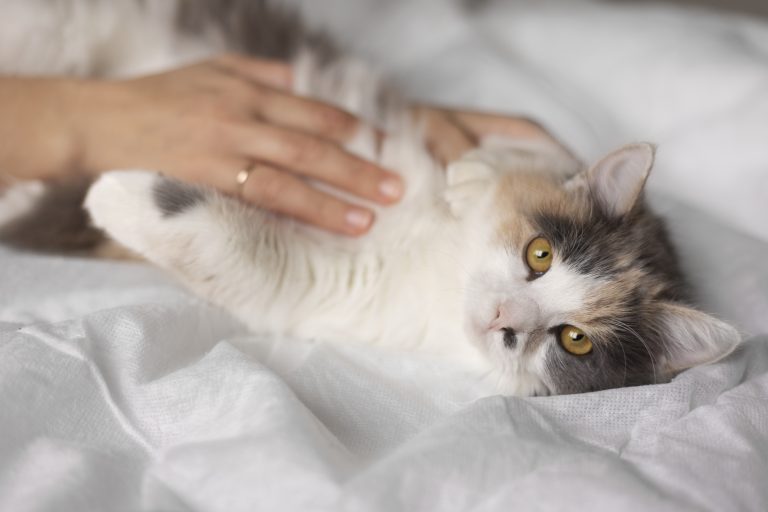Discover the truth about Ragdoll cats and allergies. Are Ragdoll cats hypoallergenic? Learn about their unique characteristics, allergen production, and tips for allergy sufferers considering these beautiful felines as pets. Are you a cat lover who suffers from allergies? You might have heard whispers about Ragdoll cats being a potential solution to your sneezy woes. But are Ragdoll cats truly hypoallergenic? Let’s dive into the world of these captivating felines and uncover the truth behind their alleged allergy-friendly status.
As we embark on this furry adventure, we’ll explore the unique characteristics of Ragdoll cats, their allergen production, and whether they can be a viable option for allergy sufferers. So, grab a cup of tea, settle in, and let’s unravel the mystery of Ragdoll cats and allergies together!
The Allure of Ragdoll Cats: A Brief Introduction
Before we tackle the allergy question, let’s take a moment to appreciate the charm of Ragdoll cats. These stunning felines are known for their striking blue eyes, silky soft fur, and gentle temperament. Named for their tendency to relax and go limp when held, Ragdolls have captured the hearts of cat enthusiasts worldwide. Their laid-back nature and affectionate personality make them popular companions for families and individuals alike. But what about those pesky allergies? Can Ragdoll cats really be the answer to an allergy sufferer’s prayers?
Understanding Cat Allergies: The Root of the Problem
To determine whether Ragdoll cats are hypoallergenic, we first need to understand what causes cat allergies. Contrary to popular belief, it’s not just the fur that triggers allergic reactions. The main culprit is a protein called Fel d 1, which is found in a cat’s saliva, urine, and skin cells. When cats groom themselves, this protein spreads to their fur and eventually becomes airborne, causing those dreaded sneezes and itchy eyes. So, the question isn’t just about how much a cat sheds, but also about how much of this allergen they produce.
The Hypoallergenic Myth: Debunking Common Misconceptions
Let’s address the elephant in the room: there’s no such thing as a truly hypoallergenic cat. I know, I know – it’s a bit of a bummer. But hear me out! While some cat breeds may produce fewer allergens than others, no cat is completely allergen-free. The term “hypoallergenic” is often misused in the pet world, leading to confusion and disappointment for allergy sufferers. So, where do Ragdoll cats fit into this picture? Are they at least less likely to trigger allergies compared to other breeds?

Ragdoll Cats and Allergen Production: What the Science Says
When it comes to Ragdoll cats and allergens, the news is a mixed bag. On the one hand, Ragdolls don’t have an undercoat, which means they shed less than some other breeds. This can potentially reduce the amount of allergens spread around your home. However, remember that pesky Fel d 1 protein we talked about earlier? Ragdolls produce it just like any other cat. The level of allergen production can vary from cat to cat, even within the same breed. So, while a Ragdoll might shed less, they’re not necessarily producing fewer allergens overall.
Grooming Habits: A Double-Edged Sword
One interesting aspect of Ragdoll cats is their grooming habits. These fastidious felines are known for being meticulous groomers, which can be both good and bad news for allergy sufferers. On the positive side, their thorough grooming means they’re less likely to have dander (dead skin cells) on their coat, which can reduce allergens. However, the act of grooming also spreads saliva throughout their fur, potentially increasing the distribution of allergens. It’s like a feline catch-22!
Coat Characteristics: Does Length Matter?
Ragdoll cats are famous for their luxurious, semi-long coats. You might think that longer fur equals more allergens, but it’s not quite that simple. While it’s true that longer fur can trap more allergens, the texture of a Ragdoll’s coat is actually quite different from many other long-haired breeds.
Their silky, rabbit-like fur doesn’t mat easily and tends to be less prone to tangling. This means that allergens might not get trapped in their coat as much as you’d expect. Still, it’s important to remember that individual cats can vary widely in their coat characteristics and allergen production.
Environmental Factors: Managing Allergens at Home
If you’re considering bringing a Ragdoll cat into your life despite allergies, there are steps you can take to minimize allergen exposure. Regular grooming (preferably by someone without allergies) can help reduce the amount of loose fur and dander in your home.
Investing in a high-quality air purifier with a HEPA filter can also make a significant difference. Creating “cat-free” zones in your home, particularly in bedrooms, can provide allergy sufferers with a safe haven. Remember, managing allergies is often about finding a balance and creating an environment that works for both you and your feline friend.
The Individual Factor: Why Some Ragdolls Might Trigger Fewer Allergies
Here’s where things get interesting: some people report having fewer allergic reactions to Ragdoll cats compared to other breeds. But why is this? It could be due to individual variations in allergen production among Ragdolls. Some cats simply produce less of the Fel d 1 protein than others. Additionally, a person’s specific allergy profile can make them more or less sensitive to different cats. It’s like a feline fingerprint – each cat-human interaction is unique when it comes to allergies.
Testing the Waters: Meeting a Ragdoll Before Committing
If you’re seriously considering a Ragdoll cat despite your allergies, it’s crucial to spend time with one before making a commitment. Visit a reputable breeder or a friend with a Ragdoll and spend several hours in the cat’s presence.
Pay attention to your allergic reactions – do they seem milder than usual, or are you reaching for the tissues just as much? Remember, allergic reactions can sometimes be delayed, so monitor your symptoms for a day or two after your visit. This real-world test can give you valuable insights into how you might react to living with a Ragdoll long-term.
Alternative Options: Exploring Other “Hypoallergenic” Breeds
If you find that Ragdoll cats still trigger your allergies, don’t lose hope! There are other cat breeds that are often touted as being more allergy-friendly. Siberian cats, for example, are known to produce less Fel d 1 protein than many other breeds. Devon Rex and Cornish Rex cats have short, fine coats that may trap fewer allergens.
The hairless Sphynx cat is another option to consider, although they still produce allergens in their saliva and skin oils. Remember, though, that individual cats within these breeds can still vary in their allergen production.
Living with Allergies and Cats: Practical Tips and Tricks
For those determined to share their lives with a feline friend despite allergies, there are several strategies you can employ. Regular bathing of your cat (if they’ll tolerate it) can help reduce allergens on their coat.
Using allergen-neutralizing sprays on furniture and carpets can also make a difference. Some allergy sufferers find relief through immunotherapy or allergy shots. It’s also worth noting that many people find their allergic reactions decrease over time as they build up a tolerance to their specific cat. Always consult with an allergist for personalized advice on managing your symptoms.
The Ragdoll Reality
So, are Ragdoll cats hypoallergenic? The short answer is no, but the reality is more nuanced. While Ragdolls aren’t allergen-free, their unique coat characteristics and potentially lower shedding might make them a better option for some allergy sufferers compared to other breeds. However, it’s crucial to remember that every cat and every person with allergies is different. What works for one might not work for another.
If you’re considering bringing a Ragdoll into your life, take the time to research, spend time with the breed, and consult with both a veterinarian and an allergist. With the right approach and management strategies, it might be possible to enjoy the companionship of a beautiful Ragdoll cat, even if you have allergies. After all, love sometimes finds a way – even in the face of a few sneezes!
FAQs
- Q: Can I develop an allergy to my Ragdoll cat over time?
A: Yes, it’s possible to develop allergies to any cat, including Ragdolls, even after years of living together. If you notice new allergy symptoms, consult with an allergist for proper diagnosis and management strategies. - Q: Are male or female Ragdoll cats more likely to cause allergies?
A: Male cats, including Ragdolls, tend to produce more of the Fel d 1 protein than females. However, individual variation is significant, so this isn’t a hard and fast rule. - Q: Can I reduce allergens by feeding my Ragdoll a special diet?
A: While some studies suggest that certain diets might reduce allergen production in cats, the evidence is not conclusive. Always consult with a veterinarian before making significant changes to your cat’s diet. - Q: Is it true that light-colored Ragdolls produce fewer allergens than dark-colored ones?
A: This is a myth. A cat’s coat color has no bearing on allergen production. The Fel d 1 protein is produced regardless of the cat’s appearance. - Q: Can allergy medications make it possible for me to live with a Ragdoll cat?
A: Allergy medications can help manage symptoms for some people, but their effectiveness varies. It’s essential to work with an allergist to find the right treatment plan for your specific situation.

